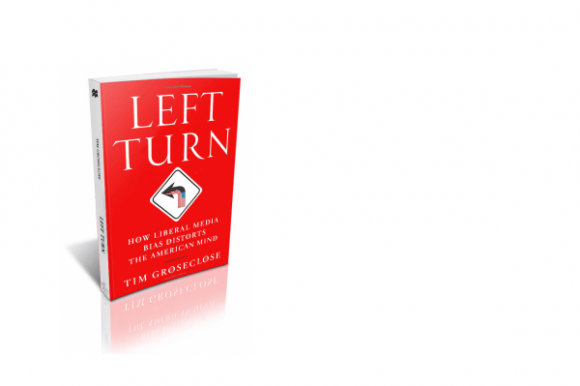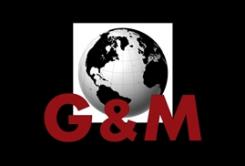By: Roger Aronoff
Accuracy in Media

Liberal media bias is a subject we at Accuracy in Media confront on a daily basis. We identify examples, explain the significance, and present facts, figures and informed opinions that the media usually choose to ignore.
In a recent interview with AIM, Tim Groseclose discussed his recent book, Left Turn: How Liberal Media Bias Distorts the American Mind. Groseclose is a professor of political science and economics at UCLA and has spent years constructing precise, quantitative measures of the slants of media outlets. He does this by measuring the political content of the news, and converting that content into an “SQ,” or “Slant Quotient,” of the outlet. To determine bias, he compares SQs of news outlets to the “PQs,” or “Political Quotients,” of voters and politicians. In the book, Groseclose contends that the general leftward bias of the media has shifted the PQ of the average American by about 20 points on a scale of 100. Groseclose attempts to quantify and understand liberal media bias by applying rigorous academic standards.
For the most part, Groseclose hits the nail on the head. He points to studies that demonstrate that a high percentage of reporters vote overwhelmingly for Democrats, and their political donations reflect that. He talks about how much more often liberal think tanks are cited as sources than conservative ones, and how conservative sources are identified by their political leanings far more often than the liberal ones.
He brings a very interesting dimension to the discussion, yet I think that in some ways, by adhering to these academic standards, the forest is missed for some of the trees. For example, he identifies Matt Drudge of The Drudge Report as “a left-leaning centrist,” mainly because so many of the publications he links to are liberal. But I don’t find that to be an accurate assessment. I see his point, and how he arrives at it, but it strikes me that Drudge is generally linking to these articles because, as we often demonstrate, there are facts and quotes in these articles that support the conservative viewpoint, or expose the liberal hypocrisy, if only those points were emphasized rather than buried in the linked stories.
In addition, as we discussed, it is much more difficult to measure bias by omission. For example, the prime time lineup on MSNBC went months without acknowledging the Solyndra scandal that has been widely covered in the conservative media. But to the mainstream liberal media, it is treated as a partisan political issue, when they do get around to covering it. The facts that have emerged reveal a White House paying off companies, including Solyndra, owned and run by Obama campaign supporters with hundreds of millions of dollars of government subsidies. And in the case of Solyndra, this occurred even though it was obvious at the time that the company was destined for failure. This goes against the media narrative that Obama operates on a higher ethical plane than previous scandal plagued politicians, and that subsidies designed to further green energy companies and technologies are somehow morally superior to helping the more established energy sectors, which provide the overwhelming majority of our current energy needs.
All in all, Groseclose’s book is a valuable contribution to understanding and measuring the degree to which media bias shapes public perceptions.
Below, in italics, are excerpts from the interview. You can listen to the entire interview or read the transcript here.
Maybe the most influential person in this whole thing has been Steve Levitt, the author of Freakonomics. He’s been a good friend of mine since 1994, and I’ve watched him. Unlike most academics, he’ll take these questions that really interest laypersons, something that a layperson would say, “I’d like to know the answer to that question.” and he’ll tackle it.
To make sure that that little bit of subjectivity wouldn’t creep in, when we hired research assistants to code this data, we made sure that we had almost a perfect mix of conservatives and liberals. I actually asked them, before we hired them, “Who’d you vote for last election?” For our data, we had about half of it coded by Bush supporters, half of it coded by Gore or Kerry supporters.
I’d say that Accuracy in Media, Media Research Center, those are two excellent organizations. One thing that both of you do that I really appreciate is, often you’ll point out the things they’re not reporting. I think that’s a lot of where the bias is: They’ll say, “Here are these stories that the mainstream media is overlooking,” and it’s often these sins of omission, rather than commission, that the bias comes from. I have to say, even if we have both sides doing it, I think one great service that you guys do is, you at least alert people of it.
What would you say about these groups, such as AIM, who point out this bias? If these groups could make people perfectly aware of [the bias], and make voters more skeptical of the media—whenever you read something, always be on guard, maybe they’re not telling us something—and very rational when they read newspapers and when they watch television, this would allow them to discount the bias much better, and that would have the same effect as eliminating the bias. So if you guys could be perfect at your job and make everyone skeptical and rational, then that would have the same effect: It would make America change from kind of a purple nation to, all of a sudden, voting and thinking something like Texas or Kentucky.
Here’s something interesting—Joe Biden, during a speech, was asked about Van Jones. Apparently Van Jones is trying to get these Wall Street protestors to start a revolution or something. This guy’s a self-avowed Communist. But Joe Biden, he said, “I don’t even know who Van Jones is.” Well, he was the “green jobs” czar in the Obama administration.
Well, it turns out, before Van Jones resigned—now this was in the middle of the night, one Saturday night, I think they did this purposely, to keep it out of the media, or downplay it—during that week, members of Congress had started saying, “What is this guy doing in the Obama administration?” Some were calling on him to resign. There was not one word of this during that prior week, not one word from The New York Times. So, if that’s where you got your news, The New York Times, you would not have known who Van Jones was when he finally had this dramatic resignation.
The Jayson Blairs of the world—you know, the fabricator at The New York Times—these guys, I think, are just few and far between. When they are caught, it’s dramatic, they’re fired, and their careers are ruined. So they’re not doing much lying. But, as I said, it’s what they don’t report. One, as you said, is that they’re not getting the perspectives, the quotes from experts, on the conservative side as much as a fair and balanced reporter would. Another thing that I want to point out: It’s the stories that they select.
While I’ve been promoting this book, I don’t think there’s been one news outlet with a slant quotient to the left of 50 that’s even mentioned my book. I’ve been on Fox News several times, been on several talk radio stations, several Internet outlets like the Daily Caller and PJTV, but have not seen like—The Los Angeles Times, here they have a professor in their backyard, he’s written this book that’s gaining some traction, but they haven’t mentioned one word about it. The New York Times will not review this book. Now, I kind of knew this would happen. But when I was writing the book, I have a literary agent, and she told me, “Yeah, you’re not going to get reviewed in The New York Times. But,” she said, “look, there’s all these new outlets out there, you know. A lot of them are web-based things like The Washington Times. There is a market for this, and because of this, conservative books are actually selling.”
I think our universities are at least as bad as the media in terms of being dominated by liberals, and, I think, maybe at least as bad in having a strong influence. I see it in kids: They come here conservative, but it’s very hard for them to stick to their values after four years of this kind of distortionary influence from their professors.
Roger Aronoff is the Editor of Accuracy in Media, and can be contacted at roger.aronoff@aim.org.







Speak Your Mind
You must be logged in to post a comment.